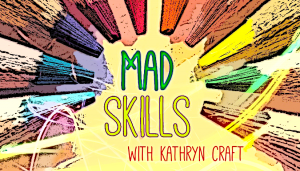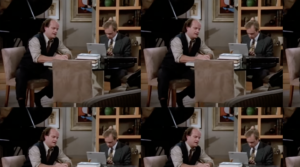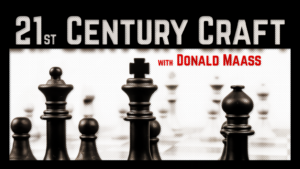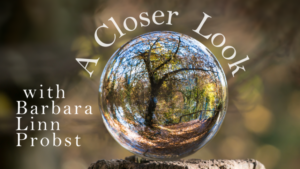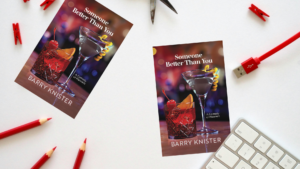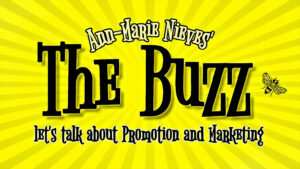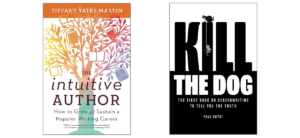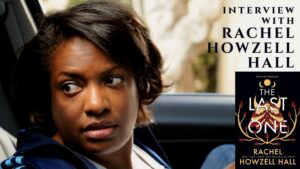Business
As the years go by, the average age of debut authors seems to get younger and younger. There’s plenty of reasons why this is great: the YA genre embracing authors who are the ages of their characters, the removal of societal assumptions that younger people can’t contribute to art in a meaningful way, the increase in opportunities for younger writers to access helpful resources, etc.
Conversation about this reality would stop there if two things didn’t start to emerge from this trend: 1) the publishing industry skewing notably toward younger writers to the point of sometimes completely shutting out older writers (meaning older than—gasp—30, 35 tops) for consideration for agent representation, publication, awards, or reviews, and 2) the assumption that the younger a writer publishes, the more “naturally gifted” of a writer they must be, and therefore a better writer than those who debut older.
I’ve taught plenty of creative writing courses, and nearly all my older students have expressed an identical concern: That because they’re older, they’ll be largely ignored by the industry both pre- and post-offer. Worries about age have even hit some of my younger students. On their end, they’ve been fed the assumption that since younger equals better, they must land a book deal right out of the gate. If they don’t, they’re failures, will soon be “too old” to publish in a way deemed meaningful, and they should just give up if their path to publication isn’t a breeze from beginning to end.
That’s just not how any of this works. As someone who’s publishing his debut, The Lilac People, at an apparently older age—To paraphrase a petulant Frasier Crane: I’m not yet “of a certain age,” I’m smack dab in the middle of “not a kid anymore.”—and spent over a decade collecting rejections from various projects, I want to set the record straight about the benefits of publishing older.
Read MoreToday’s “ad post” is also a valuable blog post written by our own Barry Knister, detailing his experience with two editors while preparing his novel, Someone Better Than You, for publication. Enjoy!
Deciding to work with an editor is a major decision. It costs money, and calls on the writer to do something analogous to what all good parents must do: love their children enough to let them go (at least until they come home and move into the basement).
That’s what the writer does when she turns over her baby to an editor. This person will get to know the fledging novel or memoir, but usually with no knowledge of how it came to be. That means, when the baby comes home, the writer must will herself into a kind of amnesia, in order to absorb and respond to the stranger’s reactions.
That’s why I urge writers to read a report, but to then put it aside for a week or more before going back to it. Otherwise, they risk acting or reacting on impulse.
Recently, I worked with two editors on my forthcoming novel, Someone Better Than You. By coincidence, both people are past editors for Penguin. In every respect, working with these editors led to improvements in my novel. I acted on most but not all of their suggestions, and what follows is my attempt to summarize the process.
RONIT WAGMAN
I first hired Ronit in 2020 to read and report on the full manuscript of what was then titled Ashley and the Jell-O Hour. Although she liked the story (“the world of the novel and the characters that dwelled in it felt deeply authentic to me”), she had several major criticisms.
AGENCY
In the version Ronit read, my main character Brady “Buzz” Ritz is a retired newspaper editor. His life is upended when he publishes a book of his anonymously published satirical columns. He blunders mightily by publishing the book’s second edition under his own name.
In this first version, Brady’s book comes about through the actions of others. The editor of Grumble (the little magazine that first published his column) talks Brady into developing a book of his work. Ritz’s best friend from his newspaper days gets an agent friend to find a publisher. Most importantly, the best friend shames Ritz into using his own name for the second edition.
As Ronit explained, I had made my main character the passive pawn of others. Someone else pushes him to develop the book, and someone else arranges for it to be published. Most importantly, someone else is responsible for Ritz publishing the second edition under his own name.
Ronit’s guidance led me to make Ritz less a passive actor, and more the responsible agent for his story. He still gets the idea for the book from his editor, but as Ronit pointed out, no agent would take on such a manuscript from an “anonymous” writer—because no publisher would be interested in such a book.
So, I replaced a commercial publisher with a university press whose editor has the freedom to publish something by an unknown writer. I also got rid of the idea of a second edition. Once I made these changes, I was free to make Brady responsible for the […]
Read MoreAs a connoisseur of writing how-tos (and yes, I had to look up how to spell connoisseur – and okay, “addict” might be a more accurate word), I have read a TON of them. And while I find valuable nuggets in nearly all of these books, lately I’ve noticed that many recent writing how-tos are essentially sharing slightly different flavors of some very similar core information.
So when I encounter a book about writing that offers some new (to me, at least) ways of looking at the craft, I sit up and take notice. My gushing ode to Chuck Palahniuk’s Consider This in this 2020 post is an example.
I just finished reading another such departure from mainstream writing how-tos: The Intuitive Author, by WU’s own Tiffany Yates Martin, who, in addition to being a wonderful writer and editor, is also an insanely good teacher and public speaker. Seriously, if you ever have the opportunity to attend one of Tiffany’s sessions or events, take it. And if you’re an author who speaks at literary conferences, trust me: you do NOT want to follow Tiffany. She’s that good.
Having seen Tiffany’s amazing presentation on backstory at WU’s brilliant 2022 OnCon, I knew what an extraordinary editorial mind she has, and how good she is at getting under the hood to amp up and improve your writing at multiple levels. So with The Intuitive Author, I guess I was expecting a book full of deep analysis into the mechanics of writing, along with some sophisticated editorial techniques. Instead, much of the analysis she offers in the book leans more towards the psychology and strategy involved in pursuing – and ideally, enjoying – the life of a writer.
I quickly realized I was not reading The Average Writing How-To, and I dove into the book with my curiosity piqued. (And yes, I had to double-check whether it was “piqued” or “peaked.” Got it right the first time – yay! Hey, it’s the small victories. But I digress…)
In short, The Intuitive Author is filled with insights and perspectives quite unlike those offered in the vast majority of writing how-tos currently on the market. And reading Tiffany’s book made me think about another writing how-to I’d recently read that takes a pretty big departure from most conventional writing wisdom: the provocatively titled Kill the Dog: The First Book on Screenwriting to Tell You the Truth, by author and screenwriter Paul Guyot.
What does this Guyot dude have against dogs, anyway?
Nothing, actually. Instead, the animal Guyot truly hates – and is taking a not-at-all thinly veiled swipe at – is the cat. Specifically, the cat in the well-known “Save the Cat!” series created by the late Blake Snyder.
If you’re not familiar, Snyder’s initial Save the Cat! book (STC to the cool kids) burst onto the scene in 2005 with a VERY structured set of templates for storytelling, which he reverse-engineered from studying many successful movie scripts. Targeted at aspiring screenwriters, Snyder’s methodology offered a compelling framework for them to adopt […]
Read MoreI’m guessing, given Tuesday’s election, most of us have been living in a world of, shall we say, heightened reality the past few days (if not weeks, or months). So, with no desire to diminish the importance or impact of that reality, allow me to offer a bit of a diversion, one I’ve had planned for some time: here’s an interview with Rachel Howzell Hall, known for her bestselling thrillers, about her turn to romantic fantasy with her latest book.
Rachel has been on a bit of a tear lately: her most recent previous novel, We Lie Here, was both a bestseller and nominated for a Los Angeles Times Book Prize. Before that she had three bestsellers in a row, What Fire Brings, What Never Happened, and These Toxic Things (also nominated for the Anthony Award, the Strand Critics Award, and the Los Angeles Times Book Award), with And Now She’s Gone garnering nominations for the Lefty, Barry, Shamus, and Anthony Awards.
With so much success in the thriller category, why jump ship and climb aboard an entirely different genre? I asked her that question (see below).
Meanwhile, The Last One, which comes out December 3, has garnered significant pre-publication praise:
The Last One can be pre-ordered now at Bookshop.Org, Amazon, B&N, Google Books, Kobo, Apple Books, or at your favorite local bookstore.
How did your agent (and/or editor/publisher) respond when you proposed a book so different from your past work?
Actually, it was my agent Jill Marsal who first reached out with the possibility of collaborating with publisher Liz Pelletier. I was thrilled at the opportunity—Liz is a genius. She was preparing to launch a new imprint from Entangled called Red Tower, filled with high-concept ideas she wanted to bring to life. I was honored to be one of the writers she thought would be a good fit for the project.
I get the feeling that this is a book you’ve been wanting to write for some time—have I got that right? If so, what kept you from getting to it sooner? How long did it take to imagine it, plot it out, and then get it down on the page?
I didn’t realize I wanted to write this book until I actually started. I was pretty intimidated by the idea of tackling not just one, but two new genres. I had never written a romance, and I had never written a fantasy. However, I soon discovered that I still had a lot to say—things I’d expressed before in mystery and crime—but now I had the opportunity to explore them in a world I could entirely create. A world without rules, until I made them.
I was offered the opportunity in July 2022 and began writing. I […]
Read MoreWriters often ask me why, with all of Writer Beware’s warnings about bad actors in the publishing world, we don’t also provide recommendations or endorsements of the good guys. “You’ve got this gigantic list of scammers on your blog; wouldn’t it also be helpful to recommend reputable agents and publishers?”
There are several reasons why we don’t do this.
Writer Beware has a very specific purpose: to document and expose schemes, scams, and pitfalls that target writers, and to educate authors on how to recognize and avoid them. As far as we know, we’re the only organization with this exclusive mission. In other words, we aren’t a general-purpose resource: we are quite narrowly focused. We are also a small, all-volunteer team, with limited time and resources.
Also, one size does not fit all. Agents, publishers, etc. have widely varying areas of interest and expertise, and the best agent or publisher or freelance editor or cover designer for one writer might be the worst choice for another. Lists of “good guys” won’t necessarily be very useful, depending on what you write and what your publishing goals are (not to mention, they are incredibly time-consuming and research-intensive to compile and maintain; did I mention that Writer Beware is a small team?). It really is better for writers to do their own research and vetting, armed against scams and bad practice with the tools and knowledge Writer Beware provides.
Finally, recommending or endorsing any particular publishers, agents, etc. risks raising questions of conflict of interest. How do you know, one of Writer Beware’s many haters might inquire, that the agents on that “good guy” list didn’t pay to be there? Of course this would not be true—Writer Beware doesn’t even accept charitable donations—but we want to avoid all possibility of such questions arising. (This is why, when scammers want to discredit us, they have to make stuff up—such as that I own my own publishing company and am badmouthing competitors).
So I can’t suggest which agents to query, which publishers to approach, which self-publishing platforms to consider. What I can do is try to cut through some of the fog and noise of the internet by recommending reliable resources to help with your publication journey. The internet is a goldmine of information for authors, but it is also a swamp of fake facts, bad advice, and scams—and it can be very difficult to figure out which websites are reliable and which experts are actually experts.
Following are a few of my favorite online resources. Some you’ll no doubt already be familiar with, but hopefully you’ll also discover something new. (And of course Writer Unboxed would be on the list, if I weren’t already here!) Most of the resources are free, but some require subscription or a membership fee. Writer Beware receives no consideration or compensation for mentioning them.
GENERAL RESOURCES
The Writer Beware Website. http://www.writerbeware.com/ The Writer Beware blog is WB’s most high-profile online presence, but many people don’t realize that we’re also a very large website. While the blog covers scams and publishing industry issues in real time, the website is a resource for general advice and warnings, designed to empower writers to recognize and protect themselves from schemes and […]
Read Morephoto adapted / Horia Varlan
To study writing craft is to learn techniques that support your reader’s perception of its reality. When done well, this provides your reader with an immersive experience.
When done too well, the reader assumes it is the author’s lived experience.
At least that’s true when the writer is a woman, claims B.D. McClay. In a recent New York Times essay, “Sally Rooney Deserves Better Than This,” McClay writes of Rooney (Intermezzo, Normal People): “She’s come to understand herself as having been selected for the role of the voice of a generation by a capricious literary establishment, a role she has neither encouraged nor enjoyed. She believes this has a lot to do with how young women are catapulted to positions of hypervisibility and not anything in particular to do with her books.”
If it were up to Rooney, McClay reports, she’d prefer to divorce her own life from the discussion of her work.
Ah, wouldn’t that be nice, to let your novel stand on its own as do other artworks, allowing readers, critics, and history to make of it what they will without you having to detail every aspect of its inspiration. But that is not our current promotional reality.
Those of us who love the art of story are drawn to the way it inspires us to seek universal truths about issues such as justice, societal responsibility, and how to emerge intact from the thorny interplay between love and loss. But these days, it is often the case that those attending promotional events and book club discussions—despite the fact that what they had chosen to read was fiction—want the facts. What aspect of your life inspired your story’s events? Who inspired this character? Which events really happened?
Don’t they understand that fiction relies on creativity? Or do they ask so as to unlock its mysterious alchemy?
Noting a “tendency to conflate female novelists with their characters,” McClay opines that there seems to be an inequality at play—the assumption that women aren’t capable of using their imaginations to explore, through story, the themes of interest to them.
While I’m not usually quick to hop on the misogyny train, McClay may have a point. Can you imagine someone sitting in a bookstore audience, circa 1900, asking L. Frank Baum which real-life harpy was the inspiration for his iconic villain in The Wonderful Wizard of Oz—even though, in his introduction, he claimed that his novel was written solely to “pleasure children today”? And I can testify that not one reader attending Chris Bohjalian’s 2018 talk in our local bookstore asked him if he’d ever been a flight attendant who woke up covered in the blood of the dead stranger he’d slept with the night before.
Of course genre, not author gender, could be at play in those examples. In her Times essay, McClay quotes interviews in which Rooney claims that she is “not all that interesting.” In a review for USA Today, Clare Mulroy writes that in Intermezzo, which follows two brothers in the aftermath of their father’s death, Rooney continues her exploration of what it means to be […]
Read More
